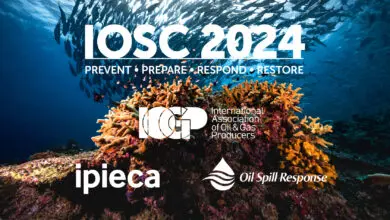
Establishing a common terminology: a key step to reducing methane emissions
FOR IMMEDIATE RELEASE (22 March 2021)
The whole gas industry joins forces in issuing a glossary on methane emissions. Having such a document is crucial to improve awareness and know-how. It is a tool of reference for the legislative process taking place this year. It also useful for anyone wishing to enhance their knowledge of CH4 emissions mitigation and management.
The European Commission announced that regulation would follow the launch of the EU Strategy to reduce methane emissions last October. The Gas Directive, the Renewable Energy Directive for 2030 climate target and the Delegated Acts of Taxonomy are part of the initiatives updated in 2021. To deliver their goals and make the energy transition happen, all these initiatives need to adopt a common terminology understandable by each actor of the EU ecosystem. By providing high-quality educational material, gas producers together with the upstream, mid-stream and down-stream part of the gas value chain responded to that crucial need.
Francisco de La Flor – GIE & MARCOGAZ Board Member explains: “This tool can be used as a reference for the legislative process by the EU institutions. It can also be useful for the industry and interested parties that wish to follow the process. The use of common definitions will contribute to improve confidence in understanding and to manage methane emission sources.”
François-Régis Mouton – Regional Director Europe, IOGP
“The glossary is a great tool that will contribute to the success of the legislative process and its implementation. With an issue as complex as methane emissions, it’s important that everyone speaks the same language.”
The glossary has been prepared after the publication in 2019 of the report coordinated by GIE and MARCOGAZ “Potential ways the gas industry can contribute to the reduction of methane emissions” together with an eclectic selection of contributors from across the whole value chain. This report enabled to:
- Identify the challenges and gaps related to methane emissions management,
- Highlight the need for the creation of a set of harmonised definitions covering the complete gas value chain,
- Issue an action plan based on the results. This action plan was developed in collaboration with multiple actors from the whole gas industry and is updated on a regular basis.
About IOGP
The International Association of Oil & Gas Producers (IOGP) is the voice of the global upstream industry. Oil and gas continue to provide a significant proportion of the world’s energy to meet growing demands for heat, light and transport.
Our Members produce 40% of the world’s oil and gas. They operate in all producing regions: The Americas, Africa, Europe, the Middle East, the Caspian, Asia and Australia.
We serve industry regulators as a global partner for improving safety, environmental and social performance. We also act as a uniquely upstream forum in which our members identify and share knowledge and good practices to achieve improvements in health, safety, the environment, security and social responsibility.
About GIE
Gas Infrastructure Europe (GIE) is the association representing the interests of European gas infrastructure operators. GIE members are active in transmission, storage and regasification via LNG terminals of renewable and low-carbon gases, including natural gas and hydrogen. Gathering 69 industry entities from 27 European countries, GIE perfectly embodies the multiple transitional decarbonisation pathways of the EU regions. The association’s vision is that by 2050, the gas infrastructure will be the backbone of the new innovative energy system, allowing European citizens to benefit from a secure, efficient and sustainable energy supply.
Download Press Release as PDF